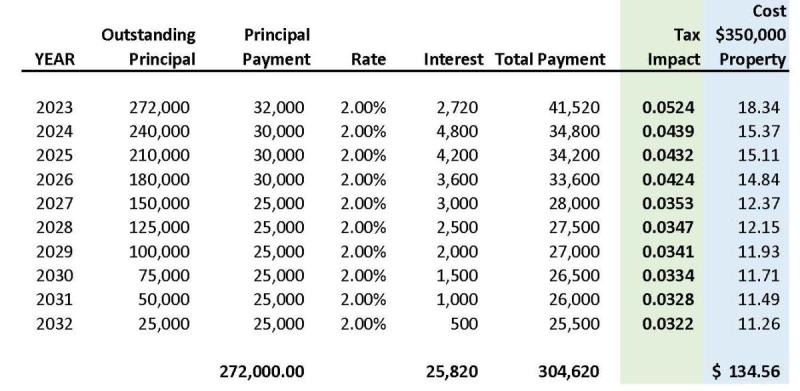Houston Barn-Proposed Bond-Frequently Asked Questions (FAQs)
- What initiated this bond request?
- Why does this need to done now?
- Why don't we just tear the barn down?
- Can the barn be dismantled and sold?
- Why don't we just replace the roof now?
- Is the cost of a metal roof more expensive than asphalt shingles?
- Can the Buildings & Grounds move their equipment to the highway garage?
- Can the uses currently being accommodated at the barn be done elsewhere?
- What options were considered by the Commitee and what is the cost of each?
- Which option is recommended?
- How will the barn stabilization be funded and what is the tax impact?
- Why are American Rescue Plan Act (ARPA) funds being used?
- Why are the cost so high for the building on an alternate site?
- If a new building is built on the current barn location, what would it look like?
- Why are taxpayers being asked to pay for the barn stabilization instead of asking for private funds?
- Is other funding available to offset these costs?
- If the bond is approved, what happens next?
- Does the barn Stabilization option allow for potential future uses?
- If the bond is not approved, what happens next?
The roof shingles prematurely failed resulting in internal water damage for over a year. In June of 2021 the NH Preservation Alliance awarded the Town of Hopkinton a Historic Barn Assessment Grant that provided funds to hire a barn consultant, Ladd Timber Framing, to do an evaluation of the existing conditions of the barn. The report identified some critical structural repairs that must be addressed. Continuing to ignore the leaking roof and needed repairs will put the barn at risk of partial collapse due to wind and/or snow load.
- DPW-Building and Grounds uses the lower level for their field maintenance operation and equipment storage.
- Fire Department uses loft area for dark and confined space training.
- Recreation Department and Slusser Center uses a third of the barn’s main floor level for storage.
- HYSA uses another third for sports equipment.
- Boys & Girls Scouts and the Library use space to store large items.
Two barn restoration contractors looked at the barn and stated that because of the barn’s size (100’ x 44’ x 50’) it would not be feasible to hire a contractor to disassemble, catalog the pieces, remove and then relocate it. If all or part of the barn was sold, the remaining sections and foundation will still need to be removed and the site reclaimed.
- Barn Stabilization ($875,000) – includes structural repairs, raising the barn, replacing the foundation, site drainage, waterproofing the basement, resetting the barn on the new foundation, and metal roof.
- Barn Rehabilitation ($1,783,000) – includes everything in the Stabilization option plus a fire suppression system, electrical service, limited heat (for the fire suppression control room), lightening rod installation, repair and painting exterior trim, siding, windows, doors, and flooring.
- Replacement on the existing barn site ($1,727,000) – includes removing the existing barn and its foundation, site preparation work, constructing an adequate size building that will accommodate the current uses, and be architecturally compatible with the Library and Slusser Center.
- Replacement on a new site ($2,286,000) – includes locating a new garage/storage structure on an existing site beyond the Library. The Committee chose this site as the Town owns the property and the location allows the barn's current uses to remain within Houston Fields. The additional costs are associated with extending electrical and water services as well as this facility being quoted as a one-story building.

The potential site reviewed by the Committee is located on a flat knoll beyond the Library and this site has ledge. Providing water, electrical, and sewer lines to the site requires longer trenching and will encounter ledge removal in some areas. The option for a new Building and Grounds garage/storage building considered by the Committee is a one-story wood frame structure divided to accommodate the field maintenance operation and the current Town storage needs.
The town owns the barn and is responsible for its maintenance. The barn is currently being used by numerous Town departments.
Yes. The Stabilization work saves the structure for the future, allows the current uses to continue and prepares for the a potential next phase, Rehabilitation. If uses develop that include assembly, those needs can be accommodated in the future, potentially with private funding.

